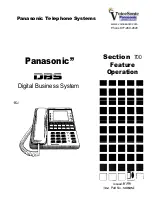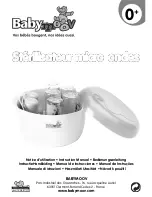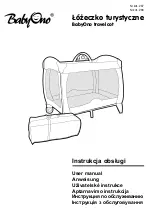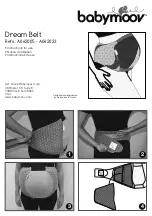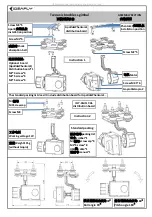
Page 15
Functional Principle, Technical Data
colorSENSOR CFO
A change in the color readings for one and the same specimen can have two causes:
- Internal factors. Change in readings due to detector noise, changes in brightness of the light source or
modulated ambient light.
- External factors. Deviations in color or surface texture of specimens or in measuring conditions (distance,
angle).
Define the color distance tolerances so that the tolerance limits are greater than the change in the readings
for acceptable specimens.
The
Sphere
tolerance space or rather ∆E denotes the color distance in a color space or how far apart the
colors of the target and the reference object to be compared are in the spatial model. The larger the differ-
ence between the colors, the more clearly the difference can be perceived. For the tolerance model
Sphere
only one value can be set, (∆E = root(∆L^2+∆a^2+∆b^2)). With this tolerance model, it is not possible to
determine in which color parameter the decisive change in color is present.
If you select the tolerance space
Cylinder
, tolerance values are set and evaluated separately for the bright-
ness value L and the color values a/b.
i
Tolerance space
Cylinder
is useful if higher distance variants are present during the measurement,
since here the value for brightness L and the values for color a and b are assigned to separate tolerance
parameters.
In the
Box
tolerance model, separate tolerance values can be set for the L, a and b color values. This enables
more precise color inspections.
With
Classify
the current color readings are associated with the closest color value (shortest direct dis-
tance) saved in the color table. In this mode, classification is always accomplished regardless of the actual
similarity between the selected colors.
For example, if red is the only color saved in the table, all color readings are associated with this color. In the
diagram below, three colors are stored in the controller, C1...C3. Cm corresponds to the currently measured
color. In the Classify mode, the controller now determines to which stored color the delta E (D1 ... D3) from
Cm to C1 ... C3 is the smallest
Since the distance D3 between Cm and C3 is the smallest, the detected color is assigned to the color output
of color C3 and output by the controller.
Summary of Contents for colorSENSOR CFO
Page 7: ...Page 7 colorSENSOR CFO...
Page 8: ...Page 8 colorSENSOR CFO...
Page 96: ...Page 96 Operation colorSENSOR CFO Fig 45 Settings Color table menu...
Page 137: ......
































